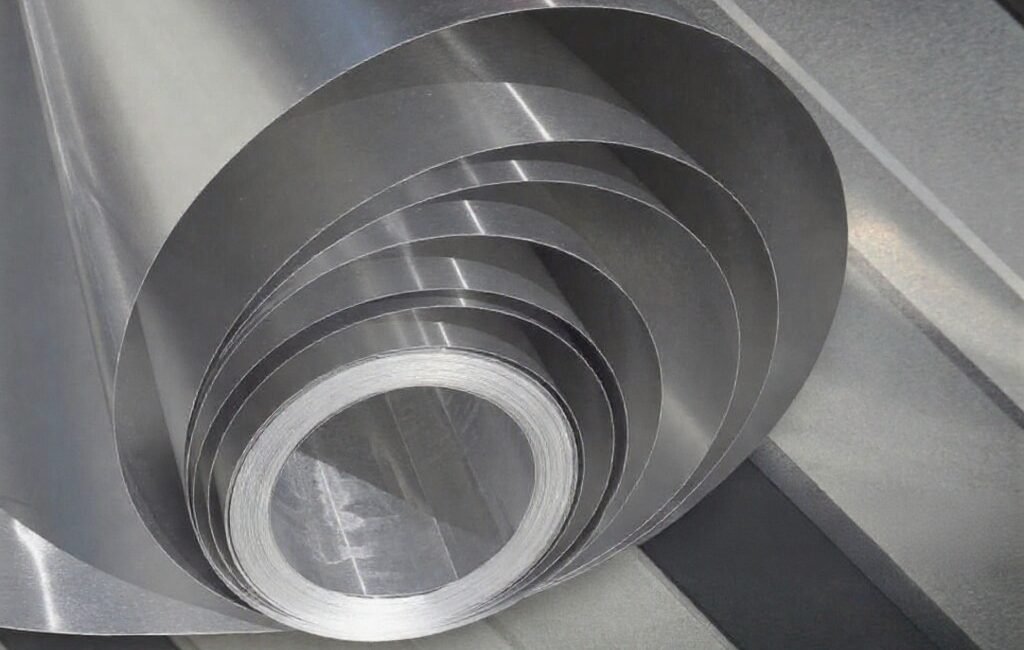When it comes to selecting the right roofing material, durability, cost, and longevity are key factors. Rolled steel roofing has emerged as a superior alternative to traditional options like asphalt shingles, clay tiles, and wood shakes. It explores the many benefits of rolled steel roofing and why it stands out as the best choice for modern construction.
Understanding Rolled Steel Roofing
Rolled steel roofing consists of large, pre-fabricated steel sheets coated with protective layers to enhance durability. These sheets are rolled into panels, making them easy to install while providing unmatched strength. Unlike traditional roofing materials, steel roofing is designed to last for decades with minimal maintenance.
Different Types of Rolled Steel Roofing
There are several types of rolled steel roofing available, each offering unique benefits:
- Galvanized Steel Roofing – Coated with zinc to prevent rust and corrosion.
- Galvalume Steel Roofing – A combination of zinc and aluminum for superior rust resistance.
- Painted Steel Roofing – Available in various colors to match different architectural styles.
Each type is designed to withstand harsh weather conditions while maintaining an attractive appearance.
Top Reasons Why Steel Roofing is Better Than Traditional Options
Unmatched Durability and Strength
One of the biggest advantages of rolled steel roofing is its incredible strength. Traditional roofing materials like asphalt shingles and wood shakes can crack, warp, or rot over time. In contrast, steel roofing resists damage from heavy rain, snow, hail, and strong winds. This makes it an excellent choice for areas with extreme weather conditions.
Longer Lifespan Compared to Traditional Roofing
Most traditional roofing materials have a limited lifespan:
- Asphalt shingles last 15 to 30 years.
- Wood shakes last 20 to 40 years.
- Clay tiles can last up to 50 years.
Rolled steel roofing, however, can last between 40 and 70 years with proper maintenance. This means fewer replacements and long-term cost savings.
Lower Maintenance and Repair Costs
Unlike asphalt shingles that require frequent repairs or wood shakes that need treatments to prevent rot, steel roofing demands very little maintenance. Occasional inspections and cleaning are usually enough to keep it in top condition. This reduces long-term expenses and hassle.
Fire and Pest Resistance
Steel is non-combustible, making it one of the safest roofing options in fire-prone areas. Additionally, unlike wood-based roofs, steel does not attract termites, rodents, or other pests. This adds an extra layer of protection for your home.
Energy Efficiency and Cost Savings
Steel roofing reflects sunlight rather than absorbing heat, which helps keep buildings cooler in the summer. This can significantly reduce air conditioning costs, leading to lower energy bills. Some steel roofs also come with special coatings that enhance energy efficiency.
Eco-Friendly and Sustainable Choice
Steel is 100% recyclable, making it an environmentally friendly roofing option. Many steel roofs contain recycled materials, reducing waste in landfills. Unlike asphalt shingles, which contribute to environmental pollution, steel roofing is a sustainable choice for eco-conscious homeowners.
Debunking Common Myths About Rolled Steel Roofing
Steel Roofs Are Noisy During Rain
Some people believe that steel roofs make loud noises during rain or hailstorms. However, modern steel roofing is installed with solid underlayment and insulation, which significantly reduces noise. In fact, a properly installed steel roof can be quieter than traditional roofing materials.
Steel Roofs Rust Easily
High-quality steel roofing is coated with protective layers like zinc or aluminum to prevent rust. Galvalume and galvanized steel roofs are specifically designed to resist corrosion, even in coastal areas with high humidity.
Steel Roofing Looks Too Industrial
Many homeowners worry that steel roofing will make their house look like a commercial building. However, modern steel roofing comes in a variety of styles and colors, including options that mimic wood, slate, or tile. This allows homeowners to achieve a traditional look with the benefits of steel.
Proper Installation and Maintenance of Rolled Steel Roofing
Hiring the Right Contractor
Since steel roofing requires precise installation, it’s important to hire experienced professionals. A poorly installed steel roof can lead to leaks and other issues. Always choose contractors with a proven track record in steel roofing installations.
Ensuring Proper Sealing and Fastening
To prevent leaks, proper sealing around edges and seams is crucial. Additionally, using corrosion-resistant fasteners ensures that the roof remains secure over time.
Minimal Maintenance Requirements
Steel roofing is low-maintenance, but a few simple steps can extend its lifespan:
- Inspect the roof once a year for loose screws or debris.
- Clean the surface with water and mild detergent if needed.
- Check for scratches or damaged coatings that may expose the metal.
Final Thoughts
Rolled steel roofing offers unmatched durability, longevity, and cost-efficiency compared to traditional roofing materials. While the upfront cost may be higher, its long-term benefits make it a smart investment for homeowners and builders. With minimal maintenance, fire resistance, and energy-saving properties, steel roofing is the best choice for modern construction needs.
FAQs
Is rolled steel roofing more expensive than asphalt shingles?
Yes, the initial cost is higher, but steel roofing lasts much longer, saving money on replacements and repairs.
Can steel roofing be installed over an existing roof?
In some cases, yes, but removing the old roof ensures better performance and prevents hidden damage.
Does steel roofing attract lightning?
No, steel roofing does not increase the risk of lightning strikes. If struck, it safely disperses the energy.
How does steel roofing perform in extreme cold?
Steel roofing handles snow and ice well due to its smooth surface, which allows snow to slide off easily.








